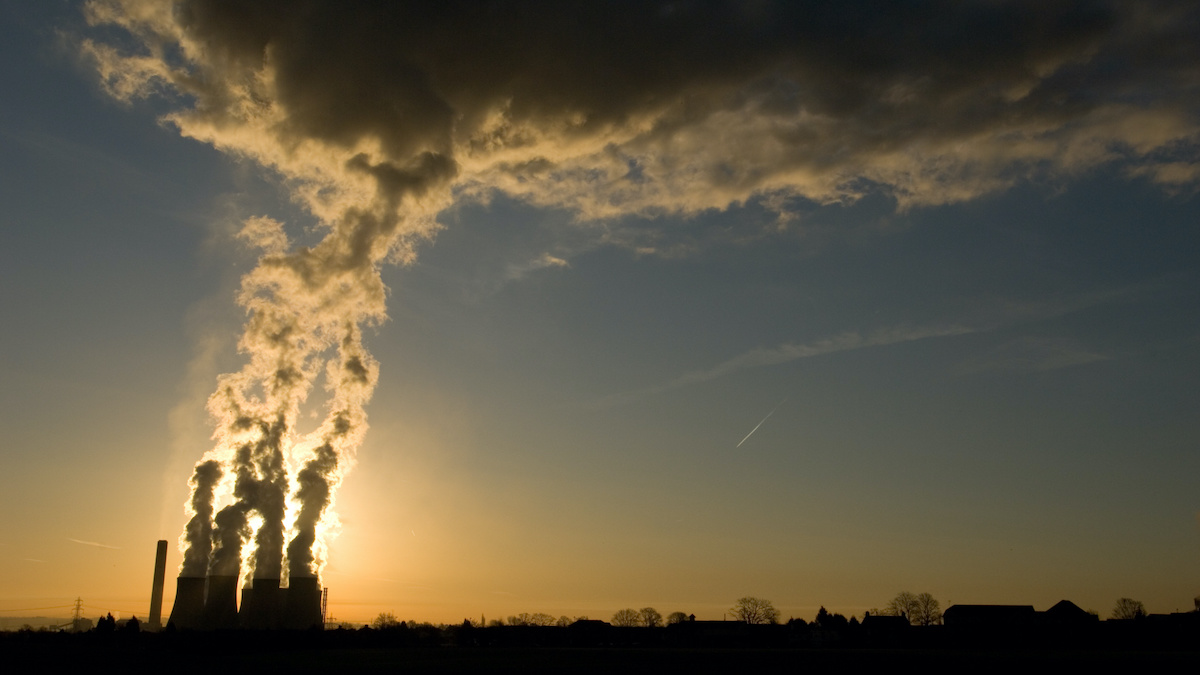
Carbon Dioxide Levels in the Atmosphere Hit Highest Level in 3 Million Years

A coal-fired power station blocks out a sunrise in the UK. sturti / E+ / Getty Images
According to a recent National Oceanic and Atmospheric Administration (NOAA) report, the last time carbon dioxide levels were this high was 3 million years ago “when temperature was 2°–3°C (3.6°–5.4°F) higher than during the pre-industrial era, and sea level was 15–25 meters (50–80 feet) higher than today.”
That period, the Pilocene Era, is unrecognizable from today. Giant camels walked around on the ice-free land above the Arctic Circle, as NBC News reported.
Earth first passed the 400 million parts per million of CO2 in the atmosphere in 2013. Rather than take it as a dire warning, we have become inured to that level of concentration and have seen it rise slightly in subsequent years. In 2018, the concentration was 407.4 parts per million (ppm), according to NOAA. This year, CO2 concentrations are predicted to peak at 417 ppm, according to NBC News.
That level will put humans in new, unfamiliar territory. “For millions of years, we haven’t had an atmosphere with a chemical composition as it is right now,” said Martin Siegert, co-director of the Grantham Institute at Imperial College London, to NBC News.
In fact, just two weeks ago, on Feb. 10, NOAA’s Mauna Loa Observatory, an atmospheric baseline station in Hawaii, recorded the daily average of CO2 levels on as 416.08 parts per million, according to Common Dreams.
Carbon Dioxide concentrations are an effective measure of how many fossil fuels we are burning. Coal and crude oil contain carbon that plants have pulled out of the atmosphere through photosynthesis over millions of years. However, in short order, human activity has returned that trapped carbon back into the atmosphere, as NOAA reported.
“We’ve done in a little more than 50 years what the earth naturally took 10,000 years to do,” said Siegert to NBC News.
Elevated concentrations of carbon dioxide are a hallmark of the climate crisis since they are associated with higher temperatures, melting ice and sea level rise, among other effects.
University of Exeter geography professor Richard Betts, head of the climate impacts division at the UK’s national weather service, expects this year’s CO2 concentrations to be 10 percent higher than normal, with one or two percent of that carbon rise attributed to the Australia wildfires, as NBC News reported. The fires, which raged for nearly five months, released about 900 million tons of carbon dioxide into the atmosphere.
The Pliocene Era from 5 to 2.6 million years ago provides a window of what a world with such high carbon dioxide concentrations can look like. It was a period well before humans evolved. Temperatures at the poles then were likely about 15 degrees Fahrenheit higher than they are now, according to Siegert, who spoke to NBC News.
“There would have been a lot less ice on the planet — there probably wasn’t a Greenland Ice Sheet, the West Antarctic Ice Sheet had probably melted, and big chunks of the East Antarctic Ice Sheet had probably de-glaciated, as well,” he said to NBC News.
Carbon dioxide in the atmosphere is also notable for its contribution to ocean acidification. According to NOAA, when CO2 reacts with water molecules, it produces carbonic acid and lowers the ocean’s pH. Already, the ocean’s surface pH has dropped from 8.21 in pre-industrial times to 8.10.
“The rate of rise in the last decade has been faster than previous decades,” said Betts, as NBC News reported. “We’re just tracking ever onwards, and 400 ppm is now a distant memory.”
- Human Ancestors Evolved in a Low-Carbon World - EcoWatch
- Oceans Do Us a 'Huge Service' by Absorbing Nearly a Third of ...
- 415 PPM: We Are All Part of Exxon's Unchartered Climate ...
- CO2 Levels Top 415 PPM for First Time in Human History - EcoWatch
- Atmospheric CO2 Passes 420 PPM for First Time Ever

 233k
233k  41k
41k  Subscribe
Subscribe 